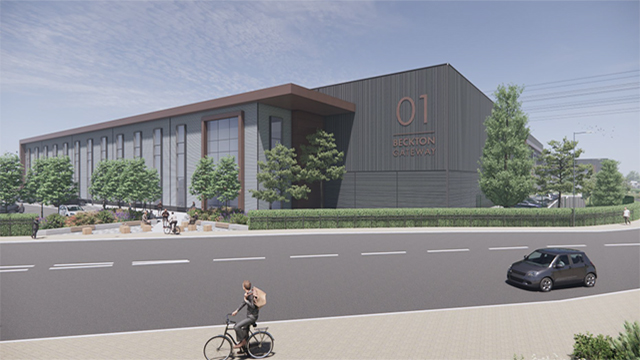Inheritance tax – Agricultural property – Tax relief – Deceased partner owning farm let to family farming partnership – Deceased living in bungalow on farm until move to care home due to ill-health four years before death – Possessions remaining in property until death – Tribunal deciding respondent executors entitled to claim agricultural property relief in respect of bungalow – Appellant commissioners challenging decision — Whether throughout seven-year period ending with death deceased occupied bungalow for purposes of agriculture – Appeal allowed
The deceased had lived in a bungalow that stood on farmland owned by him, which was let on an agricultural tenancy to a family farming partnership. It was farmed for many years by the farming partnership, in which the deceased was a partner until his death in 2006. He lived in the bungalow until he became ill some four years before his death. The rest of his life was spent initially in a hospital and later in a care home. Throughout the deceased’s illness and until his death no one lived in the bungalow; it remained furnished and contained his belongings.
On the deceased’s death, his respondent executors claimed agricultural property relief under section 116 of the Inheritance Tax Act 1984 in respect of the bungalow. The appellant commissioners refused that claim on the ground that it was not agricultural property occupied for the purposes of agriculture for a continuous period of seven years prior to his death, as required by section 117 of the 1984 Act.
The respondents appealed to the First-tier Tribunal (Tax and Chancery Chamber), which concluded that the partnership was, for the purposes of inheritance tax, in occupation up to the date of the deceased’s death and that such occupation was for the purposes of agriculture in the relevant sense because the bungalow was still used to accommodate the diminishing requirements of the senior partner: [2010] UKFTT 108 (TC). The appellant commissioners appealed to the Upper Tribunal.
Held: The appeal was allowed.
In order to qualify for agricultural property relief, the bungalow had to be occupied for the purposes of agriculture. A working farm might include different types of property, including arable fields, fields used for grazing cattle, ancillary woodland (in contrast with commercial forest), a farmhouse, cottages appropriate to the farm, farm buildings (such as storage barns for machinery or fodder, or for housing animals, or milking parlours) and other buildings (such as a farm office). All of those types of property were within the definition of ‘agricultural property’ in section 115(2) of the 1984 Act.
Extra-statutory concession F16: Agricultural Property and Farm Cottages, treated the condition regarding occupation for agricultural purposes as satisfied in some cases even where the cottage was occupied by a retired farm employee or their widow, namely where the occupier was a statutorily protected tenant or the occupation was under a lease granted for life as part of the employee’s contract of employment for agricultural purposes. However, there also had to be some objective connection between the occupation of the cottage and the relevant agricultural activities.
Where a cottage fell vacant when a worker left, it was a matter of fact and degree whether it remained “occupied for the purposes of agriculture”. Use of a dwelling house could be occupation for the purposes of agriculture even if the occupant was not engaged in physical agricultural work. In the present case, the deceased’s use of the bungalow before moving into the home and when he was an active partner could be seen as occupation for agricultural purposes, whether the deceased or the partnership had been in occupation. Thereafter, however, it was difficult to see any relevant connection between the use of the bungalow and the activities on the rest of the farm, even assuming that the deceased had played a full role in the partnership’s management after the move. Once the bungalow was no longer the deceased’s residence, there had been no other relevant connection between his use of it and the farming activities.
It was important not to attach undue weight to the occupation having been by the partnership rather than the deceased. The occupation by the partnership had been through the deceased who had been in physical occupation of the bungalow and its function had been to provide him with a home, rather than to provide accommodation for some purpose of the partnership. The tribunal had failed to consider the need for an objective connection and had attached little weight to the important factor of the unlikelihood of the deceased returning to the bungalow to live. Once the deceased had ceased to live in the bungalow, the only purpose justifying the conclusion that it was occupied for the purposes of agriculture had ceased. The fact that the bungalow continued to be used to accommodate the deceased’s needs did not constitute such occupation.
The tribunal had adopted the wrong test by asking whether the bungalow had accommodated the needs of the deceased since there still had to be a connection between the need accommodated and the farming business itself. The relevant need was that of a dwelling which ceased to exist after the deceased moved out. The question was whether events had brought about a situation under which the deceased no longer occupied the bungalow for the purposes of agriculture. Had the tribunal adopted the correct approach, the only possible finding would have been that the bungalow had not been occupied for the purposes of agriculture immediately before the deceased’s death.
Jonathan Davey (instructed by the legal department of HM Revenue & Customs) appeared for the appellants; the respondents did not appear and were not represented.
Eileen O’Grady, barrister









